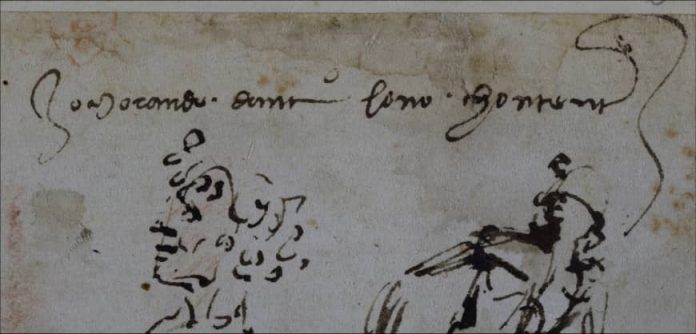Leonardo da Vinci’s earliest-known drawing has proven that the great Renaissance artist was ambidextrous, an in-depth study has found.
A previously unknown landscape sketch by the Italian artist was also revealed on the back of the original work.
“It is a real revolution in the field of Leonardo studies,” said Italy’s Uffizi Gallery director, Eike Schmidt.
Da Vinci’s first-known drawing was dated 5 August 1473 when he was 21 years old.
It shows a landscape of the Arno river valley and Motelupo Castle, just outside Florence.
The work, commonly known as Landscape 8P, has words on the front going from right to left, as the artist often used to write.
On the back, the brief script goes from left to right and alludes to an informal contract, the study by the Opificio delle Pietre Dure in Florence found.
An analysis of the two texts confirmed they were both written by da Vinci and showed he was able to write perfectly using his left and right hand.
Art historian Cecilia Frosinini said: “Leonardo was born left-handed, but was taught to write with his right hand from a very young age.
“By looking at his writings, including from this drawing, one can see his right-handed calligraphy is educated and well done.”
The findings were announced ahead of the 500th anniversary of the artist’s death next month.
Museums across Europe have organised exhibitions and events to celebrate the man known for his “unquenchable curiosity” by many historians and scholars.
Art experts also discovered two different layers of drawing, both on the back and front, using infrared light.
They found an ink line covering the original charcoal trace in certain places.
Although little ink is visible on the back, the infrared picked up another landscape depicting a river crossed by a bridge had been originally drawn there using a type of charcoal.
It was not clear if the artist had rubbed the paper clean or if the charcoal had faded over time.
“The elements that emerged during this research open up new perspectives on the interpretation of Leonardo’s Landscape 8P and on how the artist (built) the landscape, on his technique and even on his habits and abilities in writing,” Mr Schmidt said.








